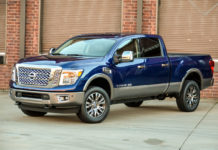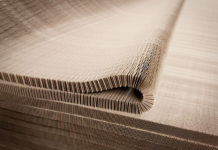Toyota inaugurated its first assembly plant in Russia on Friday as the country's car market booms and the Japanese automaker aims to become the biggest producer in the world.
Russian President Vladimir Putin and Toyota CEO Katsuaki Watanabe attended the opening of the Shushary plant in Saint Petersburg, which will assemble around 20,000 Toyota Camry vehicles a year.
“There has been unprecedented growth in the Russian market. It has doubled in the last five years. We think the potential of the market is enormous,” Watanabe said at the inauguration.
After visiting the plant and inspecting the first car to roll off production lines, Putin said the project was important “for the whole of Russia” and would also be “a good sign for other investors.”
Russian Economic Development and Trade Minister Elvira Nabiullina said the opening was “a significant event for the Russian economy as a whole” since it would help bring new technology and managerial know-how.
Production at the 202.4 million dollar (140.5 million euro) plant is set to rise to 50,000 models within two years and could eventually rise to 300,000 vehicles with the construction of a larger second plant, Watanabe said.
Shushary is part of what Russian officials are calling “an automotive industry cluster” in and around Saint Petersburg, where US car giant Ford already has a major production facility.
The cars made here are expected to help Toyota meet its global target of producing 9.9 million vehicles in 2008, ahead of General Motors' estimate of 9.3 million vehicles.
Toyota already hopes to edge ahead of its rival as the world's biggest producer this year and Russia, one of the biggest car markets in Europe, is a key part of the company's plans for expansion.
The rising revenues of many ordinary Russians, as well as the appearance of car purchase loans, have encouraged a spending spree on foreign branded cars as Russians leave behind their Soviet-era models.
Sales of foreign brands in Russia went up by 63 percent in the first 11 months of 2007 compared with the same period in 2006, according to data compiled by the Association of European Businesses in Moscow.
“The Russian market is one of the most dynamic in the world,” said Andrei Fyodorov, an auto industry analyst at Alfa Bank in Moscow.
Eduard Faritov, an analyst with Renaissance Capital, a Russian investment bank, agreed and said: “The high rates of growth will continue.”
There are currently around 185 cars for 1,000 people in Russia. The corresponding figure in western European countries is between 400 and 600 and Russia is expected to make up the difference within a few years.
That prospect, as well as incentives from the Russian government, has brought a flood of foreign carmakers to set up production in Russia, mainly in Saint Petersburg and the southern region of Samara.
Ford, General Motors, Renault and Volkswagen are among the foreign carmakers that already have plants in Russia. Hyundai, Mitsubishi, Nissan and Volvo are all planning to open in the next few years.
Analysts warn however that foreign companies face obstacles to expanding production because of a lack of highly-skilled personnel and the potential for protectionism from the authorities to promote domestic carmakers.
The main loser of the foreign auto surge has been Avtovaz, producer of the infamous Lada and owner of Russia's biggest car factory, which was built by Italy's Fiat in the 1970s in the Samara region.
According to industry data cited by the Russian business daily Vedomosti, Toyota could beat state-controlled Avtovaz in sales in Russia this year as the Soviet car giant's share of the market plummets.
“Avtovaz just can't compete. Its models are very old, although the company is now taking steps to resolve this problem…. Its share of the market is falling catastrophically,” Faritov said.
Avtovaz has a joint venture with General Motors that makes the Chevrolet Niva and earlier this month the ailing company unveiled a deal to sell French auto maker Renault a 25-percent stake.









